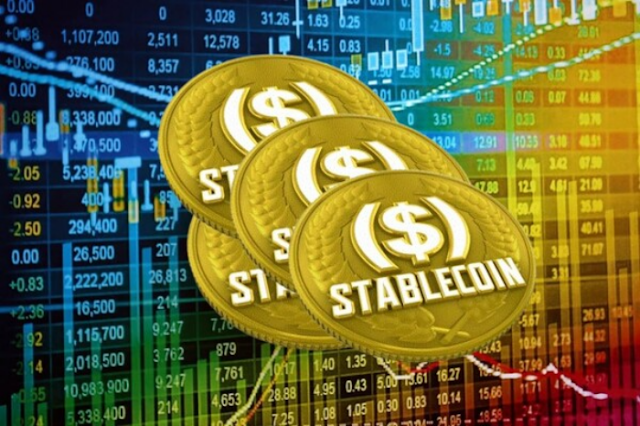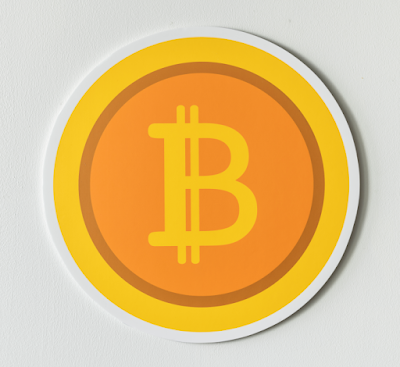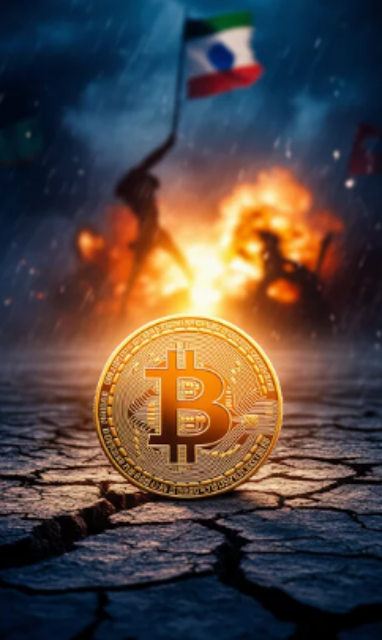Are stablecoins the start of a new currency war?
I’m diving deep into why the U.S. government is in a tricky spot with stablecoins, banning interest payments while desperately needing the capital they attract. This post breaks down the hidden motives, the inevitable loopholes, and what this means for your money and the global economy.
I was looking at my bank’s savings account statement the other day and just had to laugh. The interest rate was so low, it felt like a typo. We’re talking fractions of a percent. It got me thinking about how we’ve just accepted this as normal. But what if I told you a financial hurricane is brewing, and it’s called a stablecoin? This isn’t just some niche crypto thing anymore. It’s a force that could act like a black hole, sucking up money from all over the world and fundamentally changing the rules of the game. It’s a massive shift, and honestly, there’s no going back. Countries that don’t get ahead of this are going to be in a world of hurt. Let’s unpack this, because what’s happening behind the scenes is genuinely wild. 😊
The Big Paradox: Why Is the U.S. Kneecapping Its Own Product? 🤔
So, the U.S. has been working on legislation to regulate stablecoins, like the “Clarity for Payment Stablecoins Act.” One of the most fascinating parts of this proposed regulation is a ban on paying interest to stablecoin holders.
On the surface, this makes absolutely no sense. Think about it. Companies like Circle (which issues USDC) or Tether (USDT) take in real dollars and, in return, give you their stablecoin. To back that coin and ensure it stays pegged 1-to-1 with the dollar, they have to hold reserves. Where do they park that cash? Mostly in super-safe, short-term U.S. Treasury bonds.
Right now, those bonds are yielding a pretty decent return, say around 4% annually. So, if these companies are holding billions of dollars in reserves, they’re making a fortune in interest. The logical thing would be to pass some of that yield on to you, the person holding the coin, right? That would encourage everyone to buy stablecoins, which means more demand for U.S. Treasury debt.
And believe me, the U.S. desperately needs buyers for its debt. The national debt is already a staggering $36 trillion. Projections from the Congressional Budget Office show it could swell to nearly $46 trillion by 2028, especially with potential tax cuts on the horizon. Treasury Secretary Janet Yellen herself has estimated the stablecoin market could grow to $2 trillion by that time. That’s a nice chunk, but it doesn’t even begin to cover the new debt that will be created.
So why on earth would they ban interest payments? If they allowed it, the market might not be $2 trillion; it could be $8 trillion, maybe even $20 trillion! The U.S. could fund its deficit with ease. It seems like they’re shooting themselves in the foot. But there’s a method to the madness.
The U.S. doesn’t want the stablecoin market to grow uncontrollably. They want it to grow just enough to soak up foreign capital, without destroying the domestic financial system. It’s a high-stakes balancing act.
Protecting the Old Guard: The Real Reason for the Ban 🏦
If stablecoins started paying competitive interest, paper dollars and traditional bank accounts would be toast. Let’s look at the shocking reality of what American banks pay their customers.
According to Bankrate and the FDIC, as of mid-2025, the national average interest rate on a savings account is a measly 0.57% APY. For the big, household-name banks, it’s often even lower, sometimes dipping below 0.25%. You read that right. They’re basically giving you nothing. Even a 1-year Certificate of Deposit (CD) barely scrapes by at around 2.2% on average.
This means U.S. banks are enjoying an enormous “net interest margin” – the difference between the interest they earn on loans and the pittance they pay out on deposits. It’s a classic case of “heads I win, tails you lose,” and they’ve been getting away with it for decades. Why? A lack of real competition among the megabanks and, frankly, customer inertia. We’ve been trained to accept these low rates.
If an interest-bearing stablecoin offered, say, 4% yield, it would trigger a mass exodus of cash from traditional bank accounts. Americans would flock to stablecoins in a heartbeat.
This would cause two catastrophic problems for the U.S. economy:
- Bank Instability: With deposits flying out the door, banks would be in serious trouble. Their entire business model of borrowing cheap from you and lending high to others would collapse.
- A Massive Credit Crunch: This is the bigger, scarier issue. In economics, there’s a concept called the “money multiplier” or “credit creation.” When you deposit $100 in a bank, the bank can lend out a portion of that (say, $90), which gets deposited in another bank, which then lends out a portion of that, and so on. That initial $100 can eventually support up to $1,000 in economic activity. Money in a bank creates credit. But money moved into a stablecoin that’s 1-to-1 backed by a Treasury bond does not. It’s taken out of the credit-creation system. A massive shift would instantly dry up liquidity, causing a severe credit crunch and potentially a recession.
So, the goal of the interest ban becomes crystal clear. It was never about attracting Americans’ money. It’s about making sure stablecoins are primarily a tool for other countries’ citizens to buy into the dollar ecosystem, funding U.S. debt without cannibalizing the domestic banking system.
“Life, Uh… Finds a Way”: The Jurassic Park Problem 🦖
Remember that iconic line from Dr. Ian Malcolm in Jurassic Park? He was talking about dinosaurs breeding against all odds, but the same principle applies perfectly to money: Money always finds a way.
Banning “interest” is just a word game. History shows us this. During the Middle Ages, the Church declared that charging interest (usury) was a sin. It was strictly forbidden for Christians. So who stepped in? Jewish financiers. They couldn’t call it “interest,” so they devised ingenious workarounds. They’d structure a loan as a currency exchange and bake the fee into the exchange rate. Or they would call it a “late fee,” a “service charge,” or even package it as a “gift.” This is partly how figures like Shylock from Shakespeare’s The Merchant of Venice entered the cultural consciousness, and it’s how many Jewish families built the foundations of modern banking.
Do we really think that in the 21st century, with all our financial engineering, a simple ban on the word “interest” will hold? Absolutely not. The workarounds are already obvious.
Example Workarounds 📝
Here are just a few simple ways companies could offer a return without calling it “interest”:
- Discounts: Imagine Amazon creates an “Amazon Coin.” If you buy and hold it, you get a 5% discount on all purchases made on Amazon.com. That’s a yield, just by another name.
- Service Coupons: What if Tesla made a “Tesla Coin”? For every $1,000 you hold, you get a $50 service coupon each year, usable for maintenance or software upgrades. That’s a 5% return.
- Airdrops & Rewards: A stablecoin issuer could simply “airdrop” more of its own governance tokens or other digital assets into the wallets of its holders as a “reward” for loyalty.
I’d bet my bottom dollar that companies like Meta, which have been researching this for years, have a whole playbook of creative, legally-gray-area methods to offer returns. Once one major player breaks the seal, the floodgates will open. And will U.S. regulators be able to stop it? I’m skeptical. It would be a game of whack-a-mole.
📋 Quick Summary
The government banned interest on stablecoins, even though it would help sell much-needed debt.
The real goal is to prevent a massive bank run from low-yield savings accounts to high-yield stablecoins, which would cause a credit crisis.
“Interest” will inevitably be paid through creative workarounds like discounts, rewards, and service coupons.
The first victims will be nations with weak currencies, whose citizens will flee to dollar stablecoins, erasing local monetary sovereignty.
The First Dominoes to Fall: The Coming Currency War ⚔️
While the long-term impact on the U.S. economy is a fascinating debate, I think the more immediate and dramatic effect will be felt elsewhere. The moment stablecoins become truly mainstream, they will begin to devour weak national currencies.
Think about a country like Argentina or Turkey, where inflation regularly runs at 40%, 50%, or even higher. The value of their local currency is literally getting cut in half every year or two. In that environment, who cares if a dollar-pegged stablecoin pays 0% interest? Holding it is infinitely better than holding a currency that’s melting like an ice cube on a summer sidewalk. It’s a no-brainer.
For citizens in these countries, stablecoins are a lifeline. They offer an escape from hyperinflation. But for the governments of these nations, it’s a death sentence for their monetary sovereignty. Once a significant portion of the population starts transacting and saving in dollar stablecoins, the local currency becomes irrelevant. The central bank can print all the money it wants, but if people immediately convert it to USDC or USDT, its monetary policy becomes powerless.
Traditionally, countries used capital controls and foreign exchange laws to prevent dollars from flowing out. But with decentralized digital assets, that’s nearly impossible to enforce. This is the start of a new kind of currency war, fought not by governments, but by individuals seeking to preserve their wealth.
The countries in South America will likely be the first to feel this pressure, followed by any nation in Asia or the Middle East that has been reckless with its printing press. This isn’t theoretical; it’s the inevitable outcome of giving people a choice.
Conclusion: The World We Knew is Over
The U.S. government, out of a desperate need to fund its debt, has opened Pandora’s Box. They are trying to control this new force, but I believe they’ve underestimated its power. The attempt to ban interest is a telling sign—they know how disruptive this is, but they’re hoping to contain the explosion within their own borders.
We are at the beginning of one of the most significant geopolitical and economic shifts of our lifetime. The world we knew, where individual governments had total control over their currencies, is ending. The next 30 years will look nothing like the last 30. For us as individuals, this means we have to think differently about money, savings, and assets. Stablecoins are a powerful new tool, but assets like gold could also see their value re-evaluated in this chaotic new landscape.
The ground is shifting beneath our feet. What are your thoughts on this? Are stablecoins a threat or an opportunity? Share your take in the comments below! 😊
Frequently Asked Questions ❓
This article presents an economic analysis and personal perspective. It is intended for educational and informational purposes only and should not be considered financial advice. Always conduct your own research and consult with a qualified financial professional before making any investment decisions.






